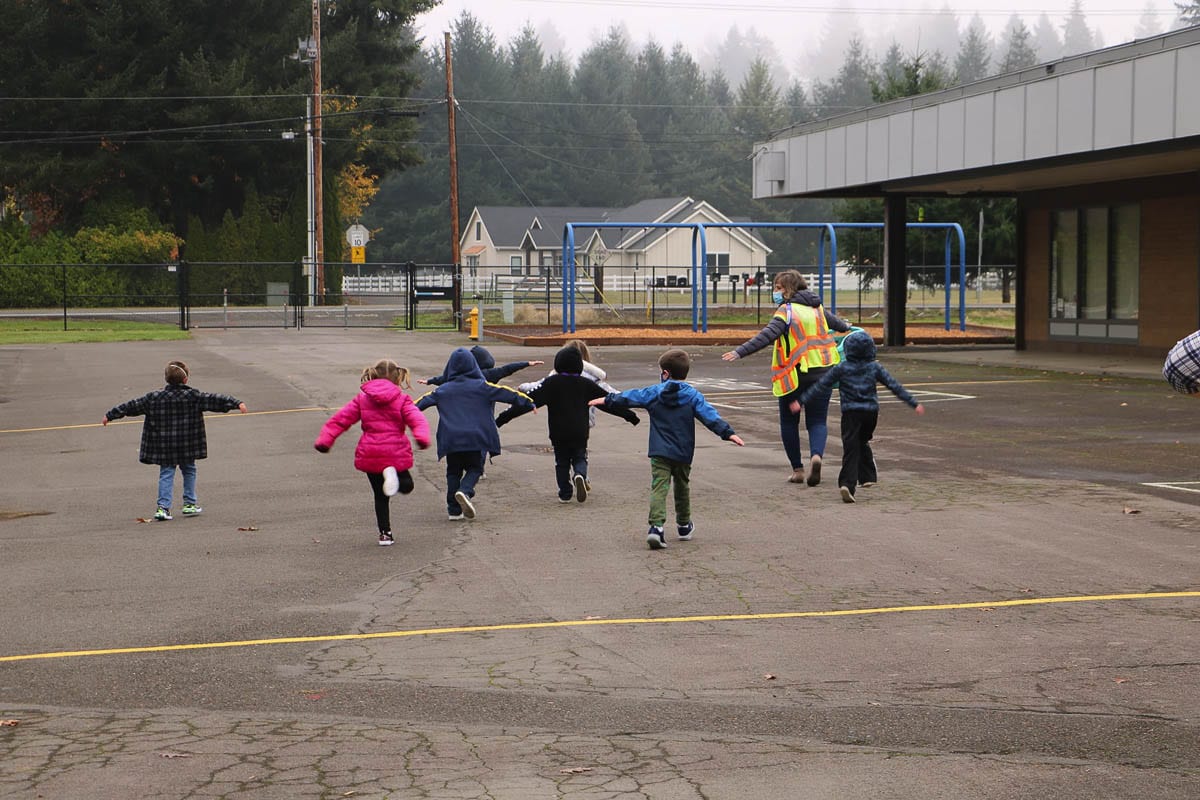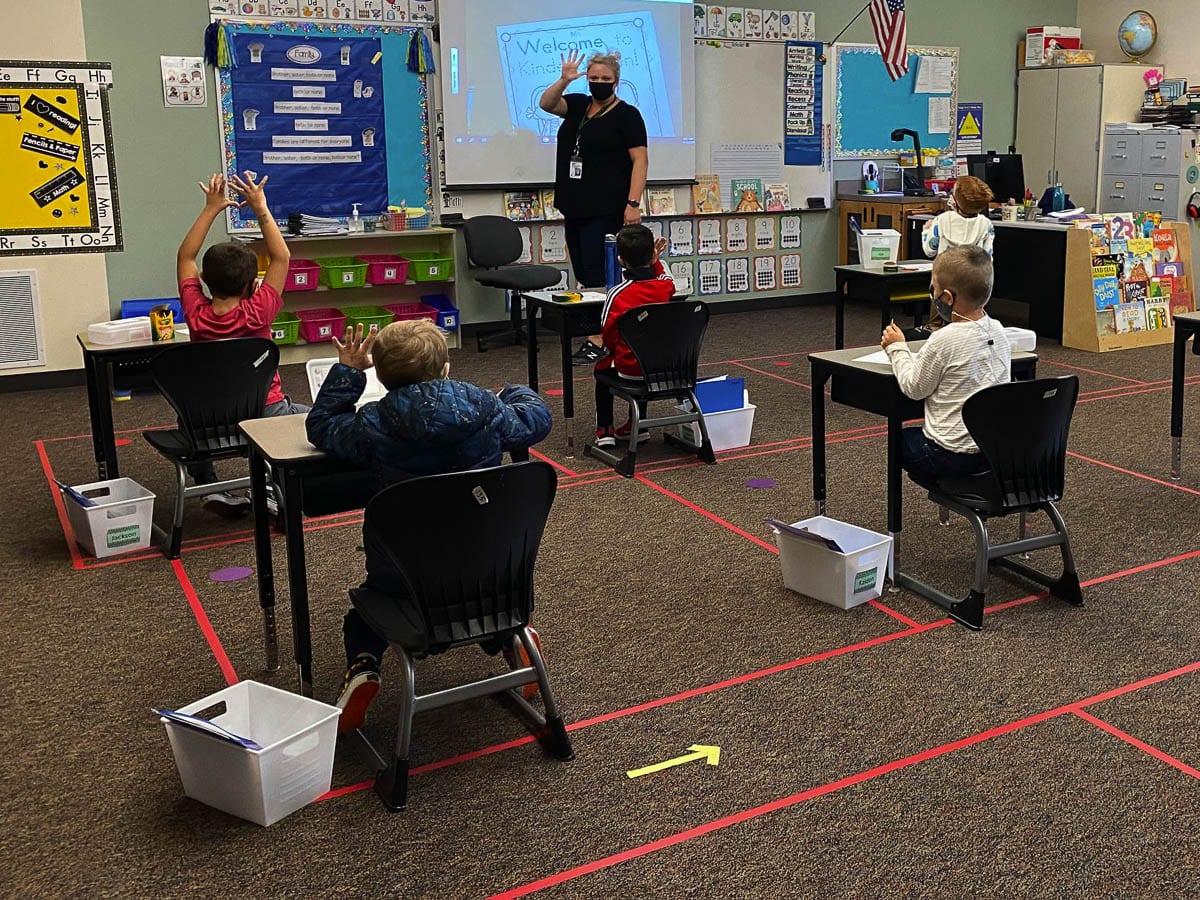The district says there are no plans to roll back in-person learning for kindergarten students at this time
CLARK COUNTY — Just over two weeks into allowing small groups of kindergarten students to return to classrooms, Battle Ground Public School district is facing difficulties.
“We’re barely hanging on,” said Shelley Whitten, associate principal in charge of human resources for the district during a school board meeting this week.
“We’re making it, but it’s some creativity on our administrator’s part, and in buildings as well,” she added.

Superintendent Mark Ross said the district has seen a handful of COVID-19 cases, but no major outbreaks, and most of the exposures have happened outside of school.
“Even though we have some students who have shown some symptoms, we don’t have any evidence yet of spread from contact within the schools,” Ross told the board. “But we do have some cases that have caused us, in some instances, to have to go to remote learning in some of our kindergarten classes because of the students or the teachers having to be quarantined.”
Students exhibiting symptoms when they show up for school, such as fever, cough, or a runny nose, have to be moved to isolation rooms until they either clear a health screening, or they can be picked up.
In many cases, those symptoms may be due to other seasonal viruses, Ross said, but the district has to treat them as a possible COVID case until it can be proven otherwise.
With the virus spreading more quickly in the community, teachers are increasingly likely to be considered a close contact, meaning they need to stay home until cleared to return.
“Obviously, for those staff that are feeling well enough to continue working in a remote environment, it’s not having a huge impact on us,” said Whitten. “But for those that are working in schools, and then become COVID positive, or isolated or quarantined, that’s becoming more challenging.”
The holidays are traditionally a time many districts face staffing shortages, but the current situation is adding to the strain.
Whitten said the district currently has access to around 27 substitute teachers who are also trained in the necessary technology for remote learning, and many of those are shared with other districts.
“We’ll make it to Thanksgiving,” said Ross. “And then we’ll kind of monitor December and see how that looks for us.”
In a statement, the district said it continues to monitor staffing levels, but has no immediate plans to roll back in-person instruction for kindergarten students.
Whitten said the district is also working to build up its own staff to do contact tracing, given the difficulties Clark County Public Health has had in keeping up with the sharp increase in new cases.
“The system is really struggling to keep up with the number of cases not just in the school setting, but in the community setting,” Whitten said. “And we’re certainly feeling the impacts of all of that here.”
Battle Ground School District announced earlier this month that high school students will remain in remote-only learning at least through Jan. 29, 2021, which is the start of the second semester. Even if new case levels suddenly dropped from high to moderate, the earliest the district could currently move to hybrid would be Jan.19.
Similar decisions have been announced by Vancouver and Evergreen school districts.

Ridgefield School District Superintendent Nathan McCann told families late last week that it was delaying the start of kindergarten in-person classes until after winter break, which runs from Dec. 19 through Jan. 4.
“Pausing our plan just a little provides valuable time for the new restrictions to mitigate the rise in community cases,” said McCann in the announcement.
New metrics could be coming
On Tuesday, The Seattle Times reported that Washington Gov. Jay Inslee had received a detailed report outlining COVID-19 outbreaks in public schools, and providing a framework for potentially adjusting metrics that could allow districts to reopen classrooms sooner.
According to the report, which had not been made public, there have been 42 outbreaks of COVID-19 (two or more cases linked to a school building) in K-12 schools in the state between March 1, 2020, and Nov. 2. Seventy-one percent of those were in public schools, with the balance in private schools.
Sixteen of those were in Spokane County, by far the highest number, with seven in Snohomish County. Clark County had four known outbreaks, on par with King County.
The report noted that out of 110 cases known to be linked to outbreaks in school, there have been no known hospitalizations and no deaths. Fifty percent of the cases were in students under the age of 18.
Currently, the Department of Health guidance says districts should remain largely in remote only learning if there are more than 75 cases per 100,000 residents in a 14-day period.
Under that metric, only 32 of the 300 school districts in the state currently qualify to begin in-person education for earlier grade levels, though the guidance is not legally binding.
Under the plan presented to Gov. Inslee for consideration, that metric would be adjusted to 200 cases per 100,000 residents. Currently, half of the state’s school districts would be eligible to begin transitioning to hybrid learning models under that metric.
Clark County, which currently has a case rate of 359.26 per 100,000 residents between Nov. 16-23 would not currently be eligible.
Many districts also have agreements in place with their teachers unions, mandating a medium range or lower COVID transmission rate for between three and four consecutive weeks prior to higher grade levels transitioning to hybrid.
Since many of those agreements were reached under the current metric, it’s unclear if districts could move any faster even if the new metric is adopted.
A spokesperson with the Department of Health told The Seattle Times that there has been no timeline set for any decision on changes.




